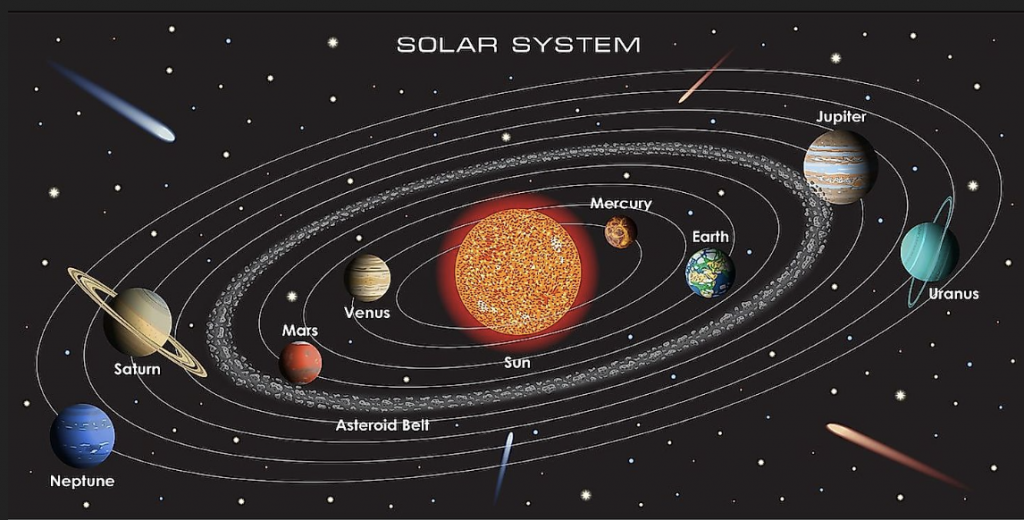Celestial motion and the tilt of the earth’s axis …
The precession of the equinoxes or of the earth’s axis may be part of a much larger cosmic context than we have so far believed. Here is a video that, based on the electric view of universe, explains this.
It is my view that celestial motion is subject to two distinct forces. They are gravity for ‘near’ interactions and Birkeland currents on the cosmic scale.
This video provides a wider background for the following short article I wrote a while ago, where I explain that gravity is a phenomenon of somewhat limited reach. The video shows that there is another, stronger force that acts on a cosmic scale …
Gravity and Orbits
Gravity could be described as “falling towards something similar”
The cause of gravity is a subtle twist, a torsion so to say, in the rigid fabric of the aether that pervades all space. Torsion of the aether’s matrix opens a preferred path of motion towards other, similarly affected regions.
When tangential motion is absent or insufficiently strong, two such gravitating objects will simply approach each other and collide. We see that when we look at asteroids approaching the moon or one of the planets. They will convert their accumulated kinetic energy and wreak more or less serious destruction upon impact.
Gravity propagates in all directions in space and is of immense reach, although very much attenuated by distance. Thus all gravitating objects in this universe are in connection with other gravitating objects. Distance and the strength of their gravitational ’twist’ modify and limit the connection. Two gravitating objects form a preferred, if relatively weak, path of motion towards each other.
Orbits
An Orbit is a velocity of direction, a vector of tangential motion, that allows gravitating objects to avoid falling into each other. They circle around the centre of gravity of the ‘system’ they are part of, but here is an important point, not generally recognised at this time…
Not only do the gravitating objects move in relation to each other, the center of gravity or barycenter also moves. Its position depends on the momentary position of all connected objects. Its motion is a result of adjusting to the motion of all the interconnected gravitating objects. This problem has been somewhat irksome for mathematicians. They call it the n-body problem, the problem of accurately predicting the motions of all the gravitating objects in a system.
So the center of gravity of any orbiting system is in constant motion, always moving towards the point defined moment by moment by the position of all the gravitationally linked objects.
Orbits are Circular
All gravitational orbits are really circular. They are circular not with regard to each other, but circular with regard to the – ever moving – center of gravity of the system. An “eccentric orbit” is merely a situation where the difference or rather the similarity in gravitational potential of two major orbiting bodies is such as to greatly move the whole system’s center of gravity.
We see circular orbits around the moving center of gravity of ‘the system’. In our solar system, the center of gravity moves slightly inside the body of the sun or close to its periphery, depending on where the planets are at any given moment in time.

Comets
Comets are a special case. They do have highly elliptical orbits. They only come around the inner solar system once in a blue moon. Their orbit may take them out into space for years or sometimes even centuries. This is, I believe, due to their great velocity, which allows them to link two different “centers of gravity”. They come around to visit, they swing around the sun, and then go on their way out into space where they encounter a second center of gravity to swing around and come back in to visit sol.
Neither of those two “centers” are strong enough to capture the comet because of its great velocity. Only the combination of two systems, distant from each other as they may be, is capable of trapping the comet.
The orbital principle is still the same as a comet orbits an imaginary line that links our sun to some distant orbital companion. This recalls the classical description of an elliptic orbit, where we are told there are two “focal points” of an ellipse that determine the orbit. One of those foci would be the solar system, the other a different and rather distant point of attraction.
Precession
Precession is a change of orientation. We see that in the ‘wobble’ of the earth’s axis. It could also be a change in an ‘elliptic’ orbit, where it is caused by a re-orientation in space of the back-and forth path of the common center of gravity.
As the video at the beginning of this article shows, gravity is not the only game in town. On a larger, cosmic scale, a different mechanism is in action. Those are strong electric currents called Birkeland currents that link star systems and galaxies, as described in the video “The Truth About Precession”.
I know I am somewhat ‘going out on a limb’ with these musings, but so be it!
Sepp Hasslberger
Terceira island, October 2024
slightly revised on 11 November
again revised on 2 February 2025
originally published here:
http://www.hasslberger.com/space-and-cosmology/gravity-and-precession/

